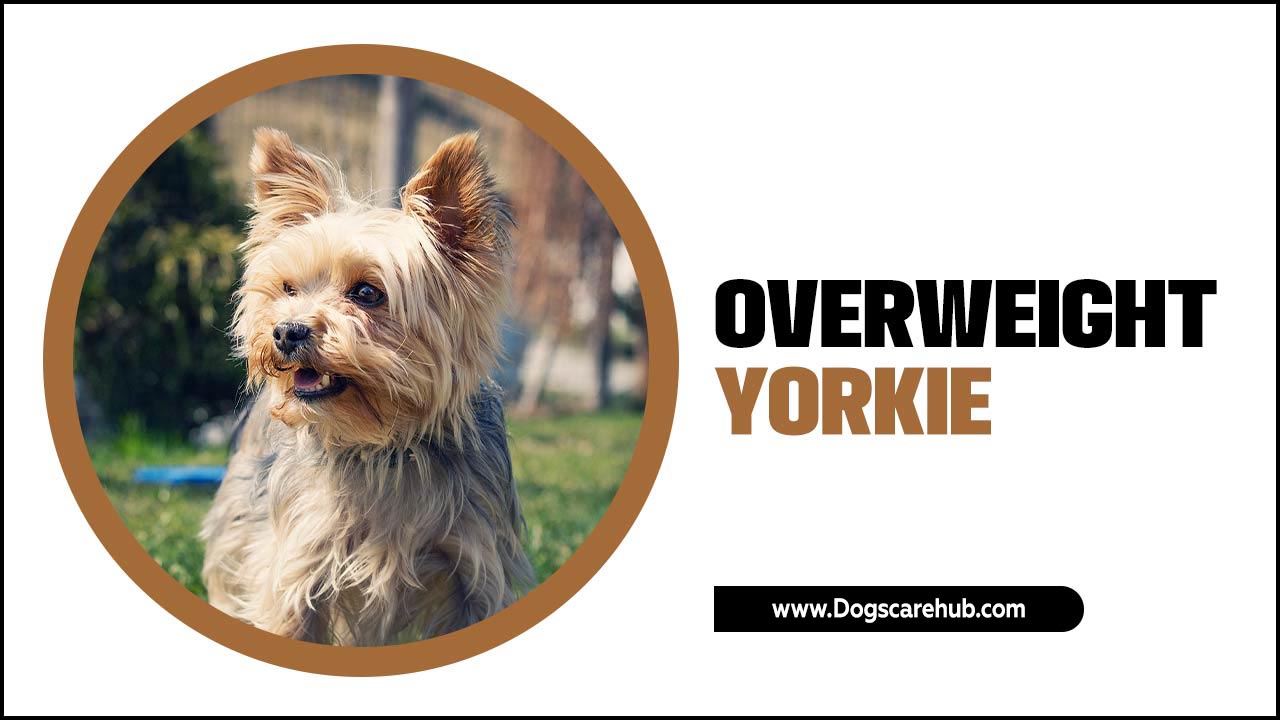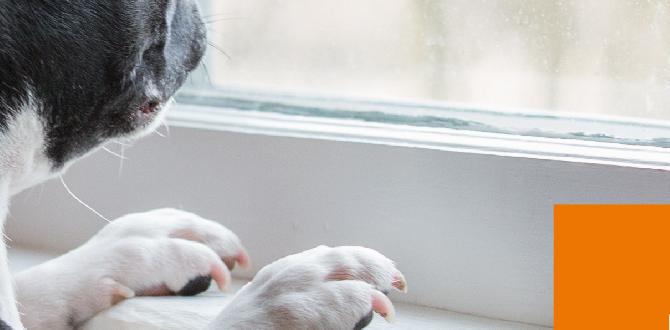Dog mental stimulation solutions are essential for a happy, well-behaved dog. Providing engaging activities and puzzles helps prevent boredom, reduces destructive behavior, and strengthens your bond. Discover proven ways to keep your dog’s mind active and engaged with these practical essentials.
It’s a common sight: a dog looking a little… bored. Maybe they’re nudging your hand incessantly, chewing on furniture, or just seem a bit restless. This isn’t about being a “bad” dog; it’s often a sign that their brilliant canine brains need a workout! Just like us, dogs thrive when their minds are engaged. Without enough mental stimulation, even the most well-behaved pup can become anxious, destructive, or simply unhappy. But the good news is, it’s easier than you think to provide the mental challenges your furry friend needs. We’ll walk you through simple, effective solutions that will have your dog feeling more content and engaged in no time.
Why Mental Stimulation for Dogs is a Game-Changer
Think of your dog’s brain like a muscle. If you don’t use it, it can become weak or, in your dog’s case, lead to behavioural issues stemming from boredom and frustration. Mental stimulation isn’t just a luxury; it’s a fundamental part of a happy and healthy life for your dog. It taps into their natural instincts, encourages problem-solving skills, and helps them process the world around them.
When dogs are mentally stimulated, they tend to be:
- Calmer and less anxious: A tired mind is a happy mind. Engaging activities help release pent-up energy, reducing stress and nervousness.
- Better behaved: Boredom is a primary driver of destructive chewing, excessive barking, and digging. Mental challenges redirect these behaviours into positive outlets.
- More confident: Successfully solving a puzzle or learning a new trick builds a dog’s self-esteem.
- More connected to you: Many mental stimulation activities involve interaction, strengthening the bond between you and your dog.
- Physically healthier: While not a replacement for physical exercise, some mental activities can involve gentle movement and contribute to overall well-being.
Without adequate mental engagement, your dog might resort to finding their own “fun,” which often involves things you’d rather they didn’t do! These simple solutions can transform your dog’s daily life and make your life as a pet parent much more peaceful and rewarding.
The Proven Essentials: Dog Mental Stimulation Solutions
The best mental stimulation activities are those that tap into your dog’s natural instincts and encourage them to think, problem-solve, and exert effort. We’ve broken down the most effective and easy-to-implement solutions below. These are the “proven essentials” that nearly any dog, regardless of age or breed, can benefit from.
1. Puzzle Toys: The Brainy Treat Dispensers
Puzzle toys are fantastic tools for providing mental challenges. They come in various forms, from simple treat balls to elaborate multi-compartment puzzles, and they all have one thing in common: they require your dog to figure out how to get a reward (usually treats or kibble) out.
How they work:
- Some toys require your dog to roll or nudge them to release treats.
- Others have sliding parts, levers, or compartments that need to be manipulated.
- More advanced puzzles might involve scent detection or sequential steps.
Getting started:
- Start simple: For a beginner, a basic treat-dispensing ball is a great entry point.
- Use their regular kibble: This makes it a healthy part of their mealtime routine.
- Supervise initially: Make sure your dog doesn’t get frustrated and try to break the toy.
- Increase difficulty gradually: As your dog masters one toy, introduce more challenging ones.
Popular Types of Puzzle Toys:
- Treat Balls:
- Simple to use, often a good starting point. Examples include KONG Wobbler or StarMark Bob-A-Lot.
- Snuffle Mats:
- Fabric mats with flaps and pockets where you hide treats or kibble. Encourages natural foraging behaviour. Brands like Paw5 Rock ‘N’ সুখী include these.
- Interactive Puzzles:
- These require more complex manipulation, like sliding pieces, lifting cones, or spinning discs. Brands like TRIXIE and Nina Ottosson offer a wide range of these. You can learn more about Nina Ottosson’s philosophy on her website, which often features educational content about canine cognition.
Puzzle toys are a wonderful way to keep your dog occupied when you can’t actively play with them, and they reinforce positive training by rewarding problem-solving.
2. Scent Work: Unleash Their Inner Detective
Dogs have an incredible sense of smell – roughly 10,000 to 100,000 times more sensitive than ours! Engaging their olfactory senses through scent work is one of the most fulfilling mental exercises you can provide.
How it works: Scent work simply involves your dog using their nose to find something hidden. This can be as basic as hiding a treat or as structured as training them to find specific scents.
Easy ways to start scent games:
- The Shell Game (Three Cups): Place a treat under one of three cups. Shuffle them around and let your dog indicate which cup has the treat.
- Hide and Seek (Treats): Start by hiding a few treats in plain sight in a room while your dog is watching. Then, gradually increase the difficulty by hiding them in different rooms or behind objects when they aren’t looking.
- “Find It!” Command: Teach your dog to associate the phrase “Find it!” with a hidden treat. Start easy, and they’ll quickly learn to search when you give the command.
More structured scent training: You can also look into formal nose work classes or resources from organizations like NACSW (National Association of Canine Scent Work). They offer programmes that teach dogs to identify specific scents like birch, anise, and clove, which can be incredibly rewarding for both dog and owner.
Scent training is a low-impact activity that can be done indoors or outdoors and is particularly beneficial for older dogs or those with physical limitations.
3. Training New Tricks & Commands: Building Brainpower and Bonds
Training is at its core a form of mental stimulation. Teaching your dog new commands or refining existing ones keeps their mind sharp and significantly strengthens your communication and bond.
Why it’s great:
- Cognitive challenge: Learning requires focus, memory, and understanding.
- Skill development: It teaches your dog to respond to cues and problem-solve within a given context.
- Bonding opportunity: Training sessions are a dedicated time for positive interaction.
- Improved manners: Many new tricks can also be practical skills that enhance good behaviour.
Tips for success:
- Keep sessions short and fun: 5-10 minutes, a few times a day, is more effective than one long, overwhelming session.
- Use positive reinforcement: Reward success with treats, praise, or a favourite toy.
- Break down complex tricks: Teach them in small, achievable steps.
- Be patient and consistent: Every dog learns at their own pace.
Beyond the basics: Once your dog knows classic commands like “sit,” “stay,” and “come,” you can move on to fun tricks like “shake hands,” “roll over,” “play dead,” or even teaching them to fetch specific toys by name. Websites like the American Kennel Club (AKC) offer a wealth of free training tips and trick ideas.
4. Food Puzzles & Slow Feeders: Making Mealtime a Mind Game
Feeding your dog from bowls can be over in seconds, offering little mental engagement. Transforming mealtime into a challenge is a simple yet effective way to provide mental stimulation.
Benefits:
- Slows down eating: Crucial for dogs prone to bloat or indigestion.
- Engages foraging instincts: Mimics natural feeding behaviours.
- Provides mental exercise: Requires thought and effort to get food.
Options include:
- Kibble-dispensing toys: As mentioned earlier, these can be used for meal replacements.
- Slow feeder bowls: These bowls have built-in mazes or obstacles that force your dog to eat more slowly and methodically.
- LickiMats and treat-dispensing mats: These can be spread with wet food, yogurt, or peanut butter (xylitol-free, of course!) and require licking and nudging to get the food. Freezing them can extend the challenge.
Table: Mealtime Solutions for Mental Stimulation
| Solution | How it Works | Benefits | Ideal For |
|---|---|---|---|
| Treat Dispensing Toys (e.g., KONG, Bob-A-Lot) | Dog manipulates toy to release kibble or treats. | Mental work, slows eating, independent play. | All dogs, especially those who eat too fast. |
| Slow Feeder Bowls | Obstacles in the bowl prevent rapid consumption. | Slows eating, aids digestion, prevents bloat. | Fast eaters, dogs prone to gastrointestinal issues. |
| Snuffle Mats | Kibble or treats hidden in fabric folds; dog forages. | Encourages natural sniffing/foraging, calm activity. | Dogs who love to sniff, dogs needing a calmer activity. |
| LickiMats / Treat Mats | Food spread on textured surface; dog licks to consume. | Calming effect (licking releases endorphins), slow eating. | Anxious dogs, dogs needing a calming distraction. |
Always ensure the toys or mats are appropriate for your dog’s size and chewing habits. Introduce them gradually to ensure your dog understands how to use them.
5. Environmental Enrichment: Making Their World More Exciting
Environmental enrichment involves making your dog’s everyday surroundings more interesting and stimulating. This is about diversifying their experiences and preventing monotony, which can be a significant source of boredom.
Simple enrichment ideas:
- Rotating Toys: Don’t leave all toys out all the time. Rotate them daily or weekly so they feel “new” and exciting.
- Varied Walking Routes: Explore new parks, trails, or even just different streets in your neighbourhood. New sights, sounds, and smells are a mental feast for dogs. Consider a resource like AllTrails.com to find new dog-friendly spots.
- Window Perches or Towers: For indoor dogs, a comfortable spot where they can watch the world go by can mimic looking out from a den.
- Safe Chew Items: Provide a variety of safe and appropriate chew toys. Chewing is a natural stress reliever and can be mentally engaging.
- Interactive Play: Games like fetch, tug-of-war (with clear rules), or even simple search games in the garden really engage their minds.
Environmental enrichment doesn’t always require special equipment; it’s about being mindful of how your dog interacts with their surroundings and looking for opportunities to add novelty and challenge.
6. Socialization (When Appropriate): Learning and Growing with Others
While not every dog is a social butterfly, positive social interactions can be incredibly stimulating. Learning to navigate social cues and communicate with other dogs (and people!) is a complex cognitive task.
Key considerations:
- Positive experiences are crucial: Forced or negative interactions can be detrimental.
- Breed and temperament: Some breeds are naturally more social than others. Ensure any playmate is a good fit.
- Start early if possible: Puppy socialization is vital for development, but you can still work on positive social experiences with adult dogs.
- Supervised playdates: Arrange playdates with well-matched, calm dogs in a neutral environment.
- Dog Parks (with caution): If your dog enjoys them and you can supervise carefully, dog parks can offer varied social stimuli. However, always be aware of the other dogs present and be ready to leave if things seem tense. Check local regulations and park guidelines, often available on your city or county’s park and recreation website.
For dogs who find other dogs overwhelming, controlled introductions to calm, friendly dogs can still provide positive mental stimulation without the stress.
Tailoring Stimulation to Your Dog: Age, Breed, and Personality
Not all dogs are created equal, and what is highly stimulating for one might be too much or too little for another. Understanding your dog’s individual needs is key to providing the most effective mental stimulation solutions.
Age:
- Puppies: Need a lot of mental stimulation as they learn and explore. Short training sessions, new experiences, and varied play are ideal.
- Adult Dogs: Require consistent mental challenges to prevent boredom and maintain good behaviour.
- Senior Dogs: May have less physical energy but still need mental engagement. Scent games, gentle puzzle toys, and calm training are excellent choices. They might tire more quickly, so keep sessions short.
Breed:
- Working breeds (e.g., Border Collies, German Shepherds): Often require more complex tasks and problem-solving challenges due to their inherent drive to work.
- Hound breeds (e.g., Beagles, Basset Hounds): Thrive on scent work; their noses are their primary tool.
- Terrier breeds (e.g., Jack Russell Terriers): Love puzzles and digging games (if you can provide a designated dig pit!).
- Companion breeds (e.g., Cavalier King Charles Spaniels): Benefit greatly from training, trick learning, and gentle puzzle toys.
Personality:
- High-energy dogs: Need more frequent and varied stimulation.
- Shy or anxious dogs: Benefit from predictable, low-pressure activities like scent games or LickiMats.
- Dogs who love to chew: Need safe, durable chew toys and puzzle toys that can withstand strong jaws.
- Food-motivated dogs: Will be highly engaged by puzzle feeders and treat-dispensing toys.
Observing your dog’s reactions to different activities will tell you a lot about what they enjoy and what challenges them appropriately. Does their tail wag? Do they seem focused and happy? Or do they seem frustrated and ready to give up? Adjust accordingly.
Introducing Gradually: Setting Up for Success
Jumping into complex puzzles or long scent games can be overwhelming for a dog. A gradual approach ensures they understand the concept and build confidence.
- Start Simple: For puzzle toys, begin with one that’s easy to solve, or even show your dog how it works by placing the treat right at the opening.
- Short Sessions: Keep initial training or puzzle game sessions brief, 5-10 minutes maximum.
- Positive Reinforcement: Always end on a positive note. If your dog is struggling, make it easier or end the session with something they can do successfully.
- Observe Body Language: Look for signs of stress, frustration, or disinterest. If you see these, scale back or try a different activity.
- Increase Difficulty Slowly: Once your dog masters an activity, gradually make it more challenging by hiding treats in harder spots, using more complex puzzles, or shortening the time they have to find something.
The goal is to make mental stimulation a positive and rewarding part of your dog’s life, not a source of stress.
Frequently Asked Questions (FAQ)
Q1: How much mental stimulation does my dog need daily?
The amount varies greatly depending on your dog’s age, breed, energy level, and personality. A good rule of thumb is to aim for at least 15-30 minutes of dedicated mental engagement per day, in addition to physical exercise and training. Working breeds or highly intelligent dogs might need even more.
Q2: Can mental stimulation help with destructive behaviours?
Absolutely! Many destructive behaviours like chewing furniture, digging, or excessive barking are a direct result of boredom and pent-up energy. Providing sufficient mental stimulation redirects these behaviours into appropriate, engaging activities, significantly reducing their occurrence.
Q3: Are puzzle toys safe for all dogs?
Most puzzle toys are safe for most dogs when used correctly. However, it’s crucial to choose toys appropriate for your dog’s size and chewing strength. For aggressive chewers, supervise their use closely and opt for very durable options. If a toy breaks, remove it immediately to prevent your dog from ingesting pieces.
Q4: My dog gets frustrated with puzzles. What should I do?
If your dog is struggling and getting frustrated, it means the puzzle is too difficult. Make it easier! Start by showing them how it works, leave treats easily accessible, or use a simpler toy. Gradually increase the difficulty as they gain confidence. Patience is key.
Q5: Is it okay to leave puzzle toys with my dog unsupervised?
It’s generally recommended to supervise your dog with new toys or any toy that dispenses treats, especially at first. This ensures they use the toy appropriately and don’t try to break it apart. Once you know for certain your dog understands the toy and it’s durable enough, some unsupervised use might be acceptable for short periods, but caution is always advised.
Q6: How often should I rotate my dog’s toys?
Rotating toys every few days to a week can keep things fresh and exciting for your dog. By bringing out “old” toys periodically, they’ll seem new again, significantly increasing their engagement and preventing boredom. This is an easy way to boost environmental enrichment.
Conclusion: A Happier, Healthier Dog Starts with a Stimulated Mind
Providing your dog with ample mental stimulation is one of the most loving and effective things you can do as a pet parent. These proven essential solutions – from engaging puzzle toys and scent games to training new tricks and enriching their environment – cater to your dog’s natural instincts and cognitive needs. By integrating these activities into your daily routine, you’re not just preventing boredom; you’re building a stronger bond, reducing unwanted behaviours, and contributing to your dog’s overall happiness and well-being. Start small, be patient, and enjoy watching your canine companion thrive as their brilliant mind gets the workout it deserves!
Meet Elyse Colburn, the devoted canine companion and storyteller behind the enchanting world of “Tales, Tails, and Adventures Unleashed.” A passionate dog enthusiast with a heart full of paw prints, Elyse Colburn shares heartwarming tales and insightful adventures, celebrating the joy, loyalty, and endless antics that make every dog a true hero. Join Elyse Colburn on this tail-wagging journey, where every post is a love letter to our four-legged friends.







